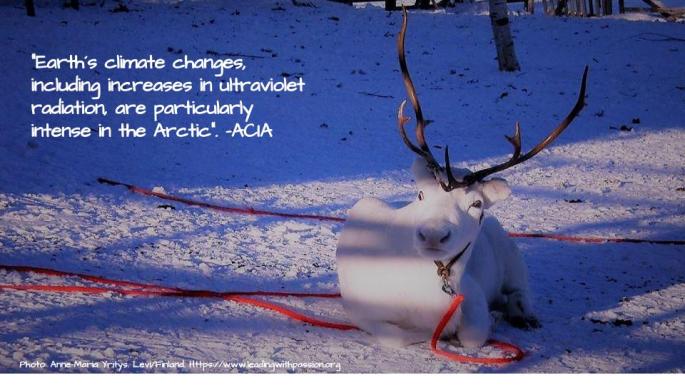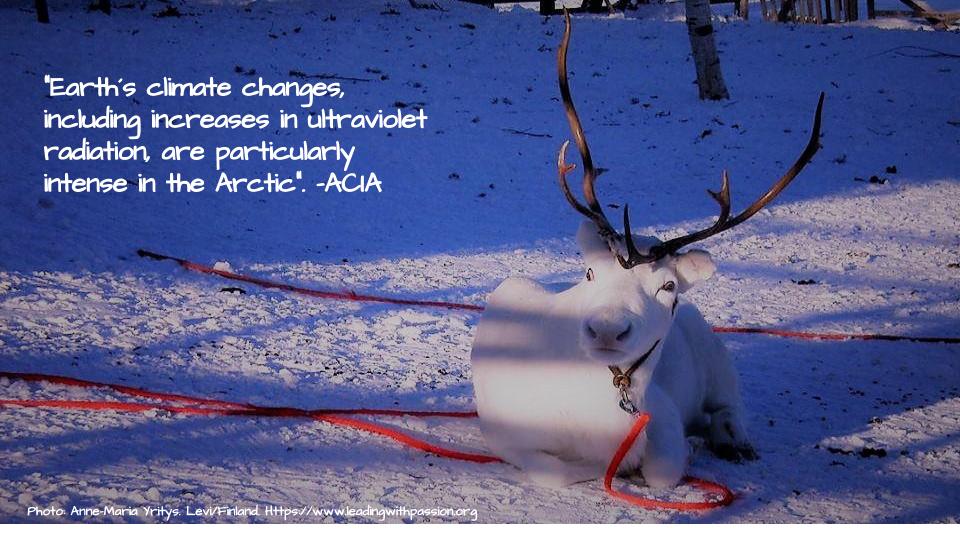
ACIA (Arctic Climate Impact Assessment) is a separate project established by the Arctic Council in 2004. Access ACIA multi-disciplinary reports HERE and HERE. The Arctic Climate Impact Assessment report chapter five (5) discusses findings about Ozone and Ultraviolet Radiation in the Arctic Region in detail.
Research upon Earth´s ozone layer and ultraviolet radiation begun in its early stages in the 1950´s, as British Antarctic Survey (BAS) begun researching ozone holes in Antarctica in 1956. (EPA. United States Environmental Protection Agency). According to ACIA, the Antarctic ozone hole was discovered in 1985, while scientists had begun to project anthropogenic emissions of halocarbons such as CFC leading to stratospheric ozone depletion in the preceding decade.
As a conclusion of the research and discovery of the huge Antarctic ozone hole, at its peak stretching over a total area of more than 21 million square kilometers, world leaders decided to put their wise heads together and created the Montreal Protocol. The Montreal Protocol is an international treaty that was signed in Montreal in 1987 with a purpose of protecting our Earth´s ozone layer from further harm caused by human activities. Despite of the Montreal Protocol and the efforts to protect Earth´s ozone layer from further damage, it takes decades for the ozone layer to recover. Learn more about the situation of Earth´s ozone layer at NASA Ozone Watch.
The ozone layer is a protecting layer of ozone gas surrounding Earth´s atmosphere, protecting our planet from harmful UV radiation. When the ozone layer is damaged, UV radiation that would otherwise have been kept back, reaches Earth´s atmosphere at stronger rates, causing additional harm, such as increased amounts of skin cancer and snow blindness. According to model projections, ozone losses will continue in the Arctic for decades to come despite of the actions that have been taken since the Montreal Protocol entered into force. ACIA reports that despite of partial ozone recovery, ozone depletion will continue in the Arctic for many decades, having impacts upon not only human health in the region, but also impact animals and plants in the Arctic region. Furthermore, climate change impacting sea ice and snow covers can have significant impacts on UV radiation in the Arctic Region.
Learn more by watching World Meteorological Organization´s (WMO) video “The Arctic and the Ozone Layer”:
Connect with me on Twitter @annemariayritys. For climate/environment-related posts only @GCCThinkActTank. Subscribe to Leading With Passion to receive my latest posts.
Take a step further to create YOUR online business. Learn more about the many benefits of how to create a beautiful website with WordPress.com and how to monetize your blog/website:
WordPress.com – Create A Beautiful Website
Jetpack – The ideal way to experience WordPress – Code-free Customization
WooCommerce – The most customizable eCommerce platform for building your online business


One thought on “UV Radiation Particularly Intense in The Arctic”